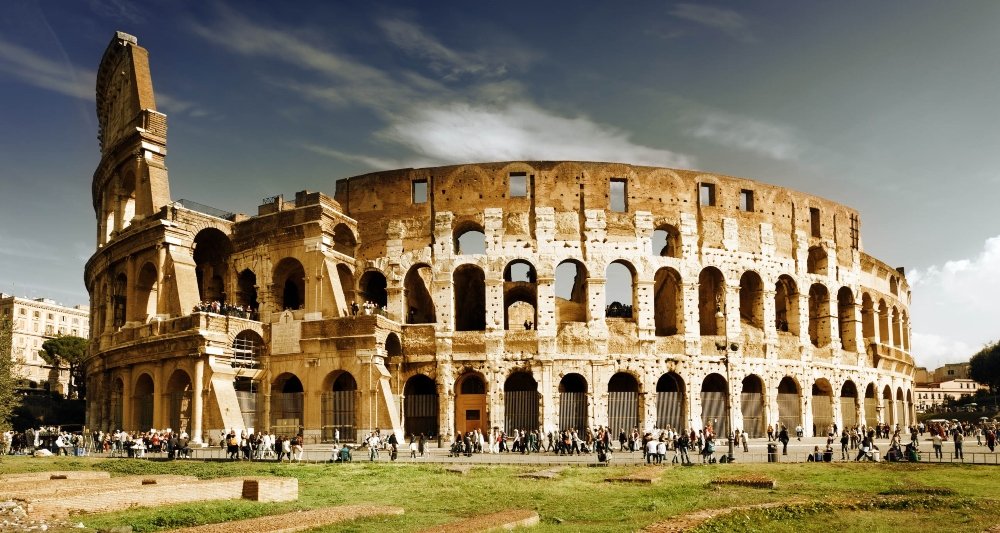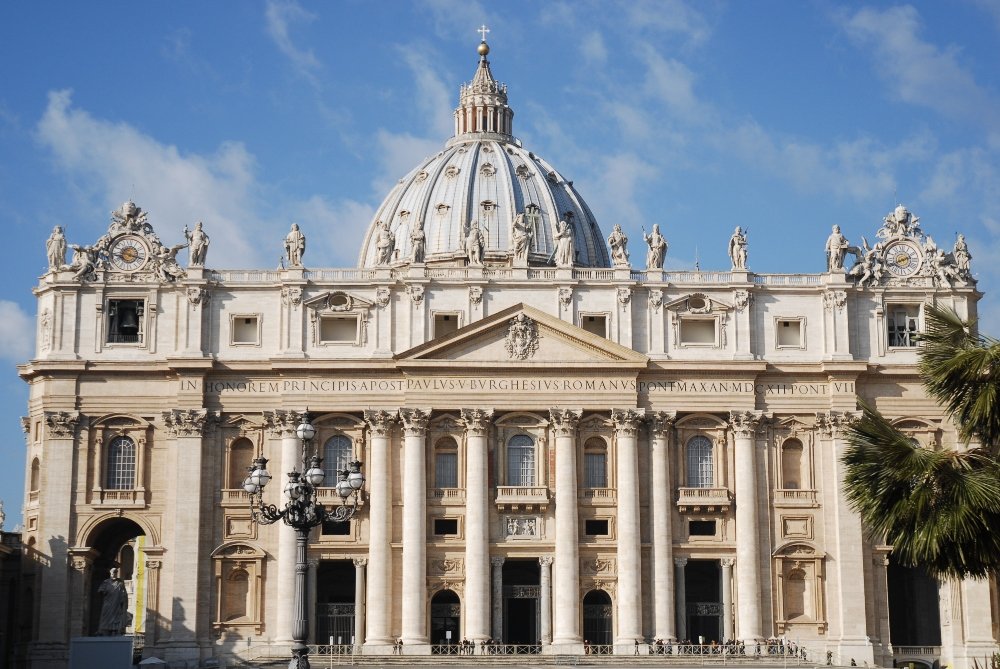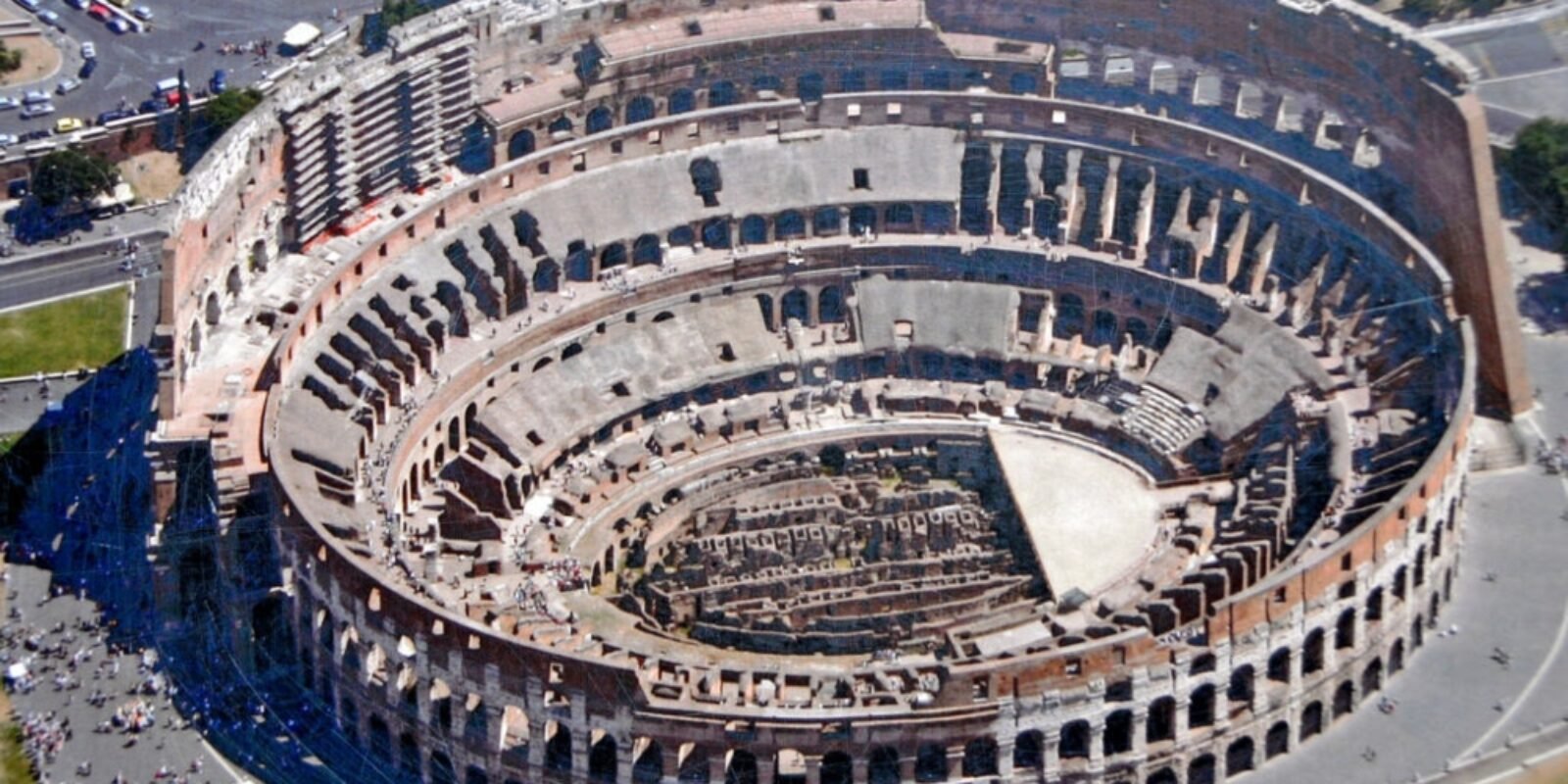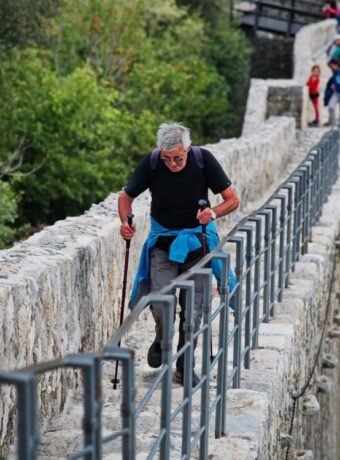Last Updated on June 27, 2025 by Julian Espinosa
Ready to experience one of the world’s most magnificent cities? Rome offers mature travelers an extraordinary journey through thousands of years of history, where every cobblestone tells a story and every piazza holds centuries of secrets.
This comprehensive guide reveals 11 carefully selected attractions that combine Rome’s timeless appeal with senior-friendly accessibility. From the awe-inspiring Colosseum to the tranquil gardens of Villa Borghese, each destination has been chosen with comfort, convenience, and cultural richness in mind.
What makes Rome perfect for mature travelers? The city’s compact historic center means shorter walking distances between major attractions, while excellent public transportation and numerous rest stops make exploration comfortable. May offers perfect weather with mild climate and pleasant temperatures, while late spring and fall provide pleasant weather and fewer crowds.
You’ll discover insider tips for navigating Rome’s treasures without the stress, from the best times to visit crowded attractions to accessibility features you might not know exist. Large piazzas like Piazza Navona and Piazza della Rotonda are fairly easy to navigate, making them perfect gathering spots for rest and reflection.
Whether you’re drawn to Vatican masterpieces, ancient Roman engineering marvels, or the charm of neighborhood trattorias, this guide ensures your Roman adventure is both enriching and comfortable. Let’s embark on a journey that celebrates the wisdom of experience while embracing the eternal magic of the Eternal City.
Senior’s Guide to Rome – Attractions That Make the City Unforgettable
With its timeless allure, Rome invites group or solo senior travelers to explore its rich tapestry of history, art, and culture. Each attraction in this eternal city tells a story, captivating different kinds of tourists with its unique charm. Below are the unique and historical places you can see on your senior travels to Rome.

11 Attractions in Senior Travels to Rome
Rome welcomes travelers of all ages with open arms, but there’s something particularly magical about experiencing this eternal city with the wisdom that comes from life experience. Each ancient stone, baroque fountain, and Renaissance masterpiece takes on deeper meaning when viewed through the lens of accumulated knowledge and appreciation for history.
The beauty of Rome lies not just in its monuments, but in its ability to accommodate every type of traveler. The city has evolved to become increasingly accessible, with modern amenities seamlessly woven into its ancient fabric. Public transportation connects major attractions efficiently, while countless cafes and piazzas provide perfect spots for rest and reflection.
Colosseum
Standing before the Colosseum, you’re witnessing nearly 2,000 years of human history. This magnificent amphitheater, once home to gladiatorial contests and public spectacles, remains one of the world’s most recognizable landmarks. The structure’s ingenious design—with its complex system of underground chambers and mechanical lifts—showcases the remarkable engineering skills of ancient Romans.
For mature travelers, special access tours are available that include elevator access to upper levels normally reached by stairs. Visit areas of the Colosseum not accessible by regular-ticket holders, providing a more comprehensive and comfortable experience.
Getting There: Take Metro Line B to “Colosseo” station, which has elevator access. The station is directly across from the monument, eliminating long walks. Audio guides are available in multiple languages, and benches throughout the area provide rest stops.
Pro Tip: Book your tickets online in advance to avoid queues, and consider visiting in the early morning or late afternoon when lighting is optimal for photography and temperatures are more comfortable.

Vatican Museums
The Vatican Museums house one of the world’s most impressive art collections, accumulated over centuries by the Catholic Church. From the breathtaking frescoes of the Sistine Chapel to the masterpieces in the Raphael Rooms, every corridor tells a story of artistic achievement and spiritual devotion.
The museums have implemented various accessibility measures, including ramps, elevators, and specialized guided tours tailored for visitors with mobility impairments. These accommodations ensure that all visitors can fully appreciate the incredible collection.
Getting There: Use Metro Line A to “Ottaviano-San Pietro-Musei Vaticani” station. The walk from the station to the museum entrance is mostly flat and well-marked. Consider booking a skip-the-line tour to minimize standing time.
Insider Advice: The museums offer free entry on the last Sunday of each month, but expect crowds. For a more peaceful experience, book an early morning or evening tour when possible.

St. Peter’s Basilica
St. Peter’s Basilica stands as one of Christianity’s holiest sites and an architectural masterpiece. Michelangelo’s famous dome dominates Rome’s skyline, while the interior houses incredible works of art, including his Pietà—a sculpture that exemplifies the height of Renaissance artistry.
The basilica’s spacious interior provides ample room for visitors to move comfortably, and numerous benches allow for rest and contemplation. The climb to the dome’s top offers spectacular views of Rome, though elevator access is available partway up for those who prefer not to tackle all the stairs.
Getting There: From the same Metro station as the Vatican Museums, St. Peter’s Square is just a short walk away. The square itself is fully accessible, with its magnificent colonnades providing both shade and dramatic photo opportunities.
Special Note: Entry to the basilica is free, but donations are welcomed. Dress codes are enforced (covered shoulders and knees), so plan accordingly.
Trevi Fountain
The Trevi Fountain represents one of Rome’s most romantic and photographed landmarks. This baroque masterpiece, completed in 1762, features Neptune’s chariot being pulled by horses through rocky terrain, symbolizing the varying moods of the sea.
Legend says that tossing a coin into the fountain with your right hand over your left shoulder ensures your return to Rome. Whether you believe in the legend or not, the fountain’s beauty and the joy of participating in this time-honored tradition make it a memorable experience.
Best Visiting Times: For those seeking emptier shots and those wary of crowds, it’s best to head here early in the morning. The fountain is beautifully illuminated at night, creating a magical atmosphere perfect for evening strolls.
Getting There: The nearest Metro station is “Barberini” on Line A, followed by a pleasant downhill walk. The area around the fountain has many cafes and gelaterias—perfect for a rest while enjoying the view.
Spanish Steps
The Spanish Steps serve as one of Rome’s most beloved gathering places. These 135 steps, built in the 1720s, connect the Piazza di Spagna at the bottom with the Trinità dei Monti church at the top. The steps themselves are an architectural achievement, designed to handle the steep terrain while creating a graceful, flowing ascent.
The area around the Spanish Steps buzzes with activity throughout the day. Street artists, musicians, and vendors create a lively atmosphere, while the surrounding streets offer some of Rome’s finest shopping and dining experiences.
Accessibility Note: While climbing all 135 steps might seem daunting, the steps are wide and well-maintained, with handrails available. Plenty of seating areas allow for rest breaks, and the people-watching opportunities are excellent.
Getting There: Metro Line A to “Spagna” station brings you directly to the base of the steps. The station has elevator access, making it convenient for all visitors.
Pantheon
The Pantheon stands as perhaps the best-preserved building from ancient Rome, and for good reason—its revolutionary design has inspired architects for nearly 2,000 years. The massive concrete dome, with its famous oculus (opening) at the center, creates an almost mystical atmosphere as sunlight streams through the opening throughout the day.
What makes the Pantheon particularly special is its perfect proportions, the diameter of the dome equals the building’s height, creating a perfect sphere within the cylinder. This mathematical precision, combined with the building’s spiritual significance, creates a sense of harmony that visitors often find deeply moving.
Getting There: The Pantheon sits in the heart of Rome’s historic center, easily walkable from many other attractions. Bus stops at “Argentina” and “Plebiscito” provide convenient access. The surrounding area offers numerous cafes where you can sit and admire the building’s exterior.
Fun Fact: Entry to the Pantheon is free, making it an accessible wonder for all visitors. The building serves as a tomb for several important figures, including the artist Raphael.
Villa Borghese
Villa Borghese offers a welcome respite from Rome’s urban intensity. This expansive park provides shaded walkways, beautiful gardens, and several world-class museums. The park’s design makes it perfect for leisurely strolls, with well-maintained paths and plenty of benches for rest.
The crown jewel of Villa Borghese is the Galleria Borghese, which houses an extraordinary collection of sculptures and paintings. The gallery’s intimate size makes it less overwhelming than larger museums, while its masterpieces by Bernini, Caravaggio, and Titian rank among the world’s finest artworks.
Getting There: Metro Line A to “Spagna” station, followed by a gentle uphill walk through the park’s main entrance. Alternatively, several bus lines serve the park’s perimeter. Golf cart tours are available for those who prefer not to walk extensive distances.
Park Amenities: The park includes a lake with rowboat rentals, several cafes, and even a small zoo (Bioparco di Roma), making it perfect for a full day’s outing.
Roman Forum
The Roman Forum once served as the beating heart of the ancient world’s greatest empire. Today, this sprawling archaeological site allows visitors to walk among the ruins of temples, government buildings, and markets that shaped Western civilization.
While the Forum requires more walking than some other attractions, the payoff is immense. Standing where Julius Caesar once gave speeches and where senators debated the empire’s future connects you directly to pivotal moments in human history.
Visiting Strategy: Consider booking a guided tour that includes skip-the-line access. Professional guides can bring the ruins to life with stories and historical context that enhance the experience immensely. Audio guides are also available for self-guided exploration.
Getting There: Metro Line B to “Colosseo” station serves both the Colosseum and Roman Forum. A combined ticket covers both attractions plus Palatine Hill, providing excellent value.
Piazza Navona
Piazza Navona showcases Rome’s baroque period at its most spectacular. This piazza with its Baroque fountains offers so much to do and is completely accessible. The square’s three fountains, including Bernini’s famous Fountain of the Four Rivers, create a stunning outdoor gallery.
The piazza’s elongated shape follows the outline of an ancient Roman stadium, and today it serves as one of Rome’s most vibrant social spaces. Street artists, musicians, and portrait painters add to the lively atmosphere, while surrounding cafes provide perfect spots for observing the daily theater of Roman life.
Cafe Culture: The piazza’s restaurants and cafes offer excellent people-watching opportunities. While prices reflect the prime location, the experience of dining al fresco while surrounded by baroque masterpieces is incomparable.
Getting There: Several bus lines serve the area, with stops at “Senato” and “Rinascimento.” The piazza is also easily walkable from the Pantheon and other central attractions.
Trastevere
Trastevere offers visitors a chance to experience Rome as locals do. This charming neighborhood across the Tiber River maintains its medieval character with narrow cobblestone streets, ivy-covered buildings, and family-run restaurants that have served the same recipes for generations.
The neighborhood’s relaxed atmosphere makes it perfect for leisurely exploration. Unlike the tourist-heavy areas around major monuments, Trastevere moves at a gentler pace, allowing visitors to savor the authentic Roman experience.
Dining Recommendations: Trastevere’s trattorias offer some of Rome’s most authentic cuisine. Many family-owned establishments have been operating for decades, serving traditional Roman dishes like cacio e pepe and saltimbocca alla romana.
Getting There: Tram 8 provides scenic transportation across the river to Trastevere. The “Trastevere/Mastai” stop places you in the heart of the neighborhood. Walking across any of Rome’s beautiful bridges also provides a pleasant approach.
Baths of Caracalla
The Baths of Caracalla demonstrate the sophistication of Roman engineering and the importance of public bathing in ancient society. These massive ruins, built in the 3rd century AD, once accommodated up to 1,600 bathers at a time and included not just bathing facilities but also libraries, gardens, and exercise areas.
The baths’ impressive scale and well-preserved remains provide insight into daily life in ancient Rome. The site’s open layout and wide pathways make it accessible for visitors of all mobility levels, while the peaceful atmosphere contrasts beautifully with the busier tourist sites.
Modern Enhancements: Virtual reality experiences are sometimes available, allowing visitors to see how the baths looked in their heyday. The site also hosts summer concerts, combining ancient architecture with contemporary culture.
Getting There: Metro Line B to “Circo Massimo” station, followed by a short walk. Several bus lines also serve the area. The nearby Circus Maximus provides additional historical context and is worth exploring if time permits.

Fun Facts About Senior Travels to Rome
Rome, a city where history and modernity intertwine, offers a unique travel experience, especially for senior travellers. Rome’s charm is ever-present, from its ancient ruins to its presence in popular media. Let’s explore some fun and interesting facts about this Italian city, which makes it a fascinating destination for seniors.
- A City of Many Names
- Rome is known as the “Eternal City,” which reflects its enduring history. It’s also called “Caput Mundi” (Capital of the World), highlighting its historical significance as the centre of the Roman Empire.
- A Tapestry of Architecture
- Rome’s architecture is a visual timeline of its history. The city is a living museum, from the ancient Colosseum to Baroque fountains and Renaissance art. This architectural diversity is a feast for the eyes, offering seniors a walk through different eras.
- A Cinematic Backdrop
- Rome has been the setting for many films and TV shows, enchanting viewers with its scenic landscapes. Movies like “Roman Holiday” and “La Dolce Vita” have immortalized the city’s picturesque streets and historic landmarks.
- The Trevi Fountain in Film
- The Trevi Fountain, one of Rome’s most famous landmarks, gained international fame in the film “La Dolce Vita.” It’s been a popular spot for movie scenes, symbolizing the romance and beauty of Rome.
- A Taste of History
- With its rich flavours and traditional recipes, Roman cuisine offers a delightful culinary journey. Dishes like carbonara and amatriciana have their roots in Rome, providing an authentic taste of the city’s culinary heritage.
- Wine and Dine Like a Roman
- Rome’s cafes and trattorias are not just about food but about experiencing the Italian way of life. These eateries, often family-owned, provide a warm and inviting atmosphere, perfect for seniors to enjoy a leisurely meal.
- An Ancient Metropolis
- Rome’s history spans over 28 centuries, making it one of Europe’s oldest continuously occupied sites. This long history is evident in its diverse cultural and architectural landmarks.
- A Centre of Power
- Once the heart of the Roman Empire, Rome has played a significant role in shaping Western civilization. Its historical sites, like the Forum and Palatine Hill, offer a glimpse into the life of ancient Romans.
- Renaissance and Baroque Masterpieces
- Rome is a treasure trove of artistic masterpieces. The Vatican Museums and the Sistine Chapel, home to works by Michelangelo and Raphael, showcase the city’s rich artistic legacy.
- Street Art Scene
- While known for its classical art, Rome also has a vibrant contemporary art scene. Neighbourhoods like Ostiense feature impressive street art, adding a modern twist to Rome’s artistic landscape.
- The Colosseum’s Evolving Role
- The Colosseum, once a venue for gladiatorial contests, has evolved over the centuries. It has served various roles, from fortresses to Christian shrines, mirroring the city’s changing history.
- Ancient Roads Lead to Rome
- Rome’s ancient road network is an engineering marvel like the famous Appian Way. These roads, still visible today, were crucial for the expansion and control of the Roman Empire.
- Villa Borghese: A Green Oasis
- Rome isn’t just about urban landscapes. Villa Borghese, the city’s third-largest public park, offers lush greenery, museums, and peaceful walkways, providing a serene escape from the bustling city streets.
- Secret Gardens and Urban Nature
- Beyond the well-known parks, Rome hides several secret gardens and green spaces. These lesser-known spots offer tranquility and beauty, perfect for a quiet afternoon.
- A City of Churches
- Rome is known for its many churches, each with its own history and artistic value. Besides St. Peter’s Basilica, churches like Santa Maria Maggiore and San Giovanni in Laterano are architectural and spiritual wonders.
- Jewish Heritage in Rome
- Rome’s Jewish Ghetto, one of the oldest Jewish settlements in Europe, tells a story of resilience and cultural richness. The area’s synagogues and kosher restaurants reflect the city’s diverse religious tapestry.
- Inspiring Authors and Poets
- Rome has been a muse for many authors and poets. The city’s beauty and history have inspired works by writers like Keats, Shelley, and Goethe, who spent time in Rome and were influenced by its atmosphere.
- Modern Media’s Roman Fascination
- Contemporary TV shows and films continue to feature Rome, drawing on its iconic imagery and historical allure. Series like “Suburra” showcase the city’s modern side, blending history with contemporary narratives.
- Accessible Tours and Activities
- Rome offers a range of senior-friendly tours and activities. These include guided tours with special access, making it easier for seniors to explore the city’s wonders without the hassle.
- Cultural Immersion
- Seniors can engage in unique cultural experiences, from cooking classes that teach traditional Italian recipes to attending opera performances in historic theaters.
- A City That Never Ages
- Rome’s timeless appeal lies in its ability to blend past and present. It’s a city with ancient ruins alongside modern buildings, creating a unique urban tapestry.
- Endless Exploration
- Each visit to Rome offers discoveries. Whether it’s finding a hidden piazza, an unexplored archaeological site, or a charming cafe, Rome always has something new to offer.

Tips for Safe Senior Travels to Rome
Travelling to Rome can be a delightful experience for seniors, offering a unique blend of history, culture, and beauty. However, like any travel adventure, it’s important to prioritize safety and comfort. In this guide, we’ll explore essential tips for ensuring a safe and enjoyable trip to Rome for senior travellers.
- Research and Planning
- Conduct thorough research about Rome’s climate, culture, and local customs. Plan your itinerary with comfort in mind, allowing time for rest and leisure.
- Health Check and Medications
- Consult with your doctor before the trip. Ensure you have an adequate supply of medications and a list of their generic names. It’s also wise to know the Italian equivalents for your medications.
- Travel Insurance
- Invest in comprehensive travel insurance. You can get complete coverage from Travelex Insurance, which has several plans for various senior travellers. Their plans include coverage of up to $500,000 in emergency medical evacuation costs and up to $50,000 in trip cancellation costs.
- Navigating the City
- Rome’s public transportation system is extensive. Opt for taxis or buses for longer distances. Familiarize yourself with the routes and stops near your accommodation.
- Renting Vehicles
- If renting a car, choose a reputable rental service. Ensure the vehicle is comfortable and familiarize yourself with local driving laws and parking regulations.
- Choosing the Right Stay
- Select accommodations based on comfort, accessibility, and location. Hotels in central areas reduce the need for long commutes and are often closer to major attractions.
- Accessibility Needs
- If you have specific accessibility needs, communicate these with your accommodation provider. Many hotels in Rome are equipped with facilities for seniors and those with mobility issues.
- Emergency Contacts
- Keep a list of emergency contacts, including the local embassy, police, and medical services. Know the address and contact details of the nearest hospital or clinic.
- Local Pharmacies
- Familiarize yourself with the locations of nearby pharmacies (farmacie). They can be invaluable for minor health issues and advice.
- Beware of Pickpockets
- Rome, like any major tourist destination, has its share of pickpockets. Keep your valuables secure and be cautious in crowded areas like the Metro and popular tourist spots.
- Travel in Groups
- Whenever possible, travel with a companion or in a group. There’s safety in numbers, and it also makes the experience more enjoyable.
Conclusion
Rome rewards those who approach it with patience and curiosity. Unlike destinations that can be conquered in a few days, Rome reveals itself gradually, offering new discoveries with each visit. The city’s layers of history, ancient Roman ruins supporting medieval churches topped with baroque facades—mirror the complexity of human experience itself.
For mature travelers, Rome offers something beyond sightseeing: it provides perspective. Standing in places where history was made, where artists created masterpieces, and where countless generations have lived and loved, puts our own journeys into a broader context. Rome reminds us that we are part of a continuous human story, one that connects us across centuries and cultures.
The city’s rhythm matches the pace of thoughtful exploration. Romans themselves understand the value of taking time—whether for a leisurely lunch, an afternoon passeggiata (stroll), or simply sitting in a piazza watching the world go by. This approach to life, which values experience over efficiency, resonates particularly well with travelers who have learned to appreciate life’s deeper pleasures.
Every corner of Rome holds surprises. A casual stroll might lead you to a hidden church with a Caravaggio painting, a fountain designed by Bernini, or a restaurant where the owner’s grandmother’s recipes still guide the kitchen. These unexpected discoveries often become the most treasured memories of any Roman adventure.
The key to enjoying Rome lies not in trying to see everything, but in allowing yourself to truly experience what calls to you. Some visitors find themselves returning repeatedly to the same fountain or piazza, discovering new details with each visit. Others prefer to explore systematically, checking off major sites while leaving time for spontaneous exploration.
Whatever your approach, Rome will reward you with experiences that linger long after you return home. The city has a way of getting under your skin, making you part of its ongoing story. You might find yourself planning a return visit before your first one ends, already imagining the discoveries that await.
Have you started planning your Roman adventure? Whether you’re drawn to ancient history, Renaissance art, or simply the joy of experiencing one of the world’s great cities, Rome offers treasures that speak to every interest and passion. What aspect of the Eternal City calls to you most strongly?
FAQ on Senior Travels to Rome
- What is the ideal duration for a senior’s first visit to Rome?
- Plan for 4-7 days to see major attractions without rushing. This allows time for rest between sightseeing and the flexibility to revisit favorite spots. Rome rewards slow exploration over hurried tours.
- How accessible is public transportation in Rome for seniors?
- Large piazzas like Piazza Navona, Piazza della Rotonda, and Piazza del Popolo are fairly easy to navigate. Major attractions have implemented accessibility measures, including ramps, elevators, and specialized guided tours. However, some historical sites have limited accessibility due to their ancient construction.
- Are there any safety concerns for seniors traveling in Rome?
- May offers perfect weather with mild climate and pleasant temperatures, while late spring (April-May) and fall (September-October) provide pleasant weather and fewer crowds. Avoid the intense summer heat of July and August when possible.
- How can I avoid crowds at popular attractions?
- Visit major sites early morning or late afternoon. The Trevi Fountain is best visited early in the morning for fewer crowds. Book timed entries in advance and consider visiting lesser-known but equally beautiful sites during peak hours.
- What kind of health facilities are available in Rome for emergencies?
- Rome has numerous clinics and hospitals with high-quality medical care. It’s advisable to know the location of the nearest healthcare facility to your accommodation.
- What should seniors do in case of a medical emergency in Rome?
- In a medical emergency, dial the European emergency number 112. Also, have your travel insurance and health information handy.
REFERENCES
- Rome Wise – Accessible Rome Guide (https://www.romewise.com/accessible-rome.html)
- Wheel the World – Wheelchair Accessible Rome Attractions (February 2024)
- Open Mind Tours – Inclusive Rome for Seniors
- Rome Actually – Best Time to Visit Rome (February 2025)
- Lonely Planet – Best Times to Visit Rome (January 2025)
- Rome Hacks – Best Time to Visit Rome Guide (February 2025)
- Roaming Historian – Accessible Italy Tips (January 2025)
- Sage Traveling – Rome Accessible Tours and Travel Tips
- Celebrity Cruises – Best Time to Visit Rome (June 2025)
- Travellers Worldwide – Best & Worst Times to Visit Rome (March 2024)



